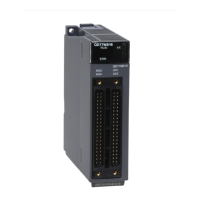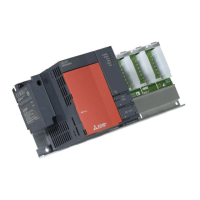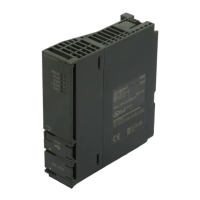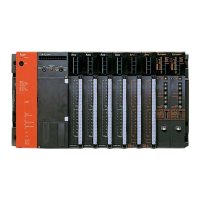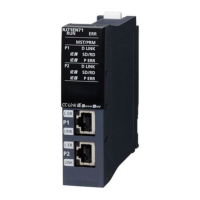3 CONFIGURATION OF INSTRUCTIONS
3.2 Designating Data
87
3
Using single/double-precision real number data
Real number data is floating decimal point data used with basic instructions and application instructions.
Only word devices are capable of storing real number data.
Single-precision real number data (single-precision floating-point data)
Instructions which deal with single-precision floating-point data designate devices which are used for the lower 16 bits of data.
Single-precision floating-point data are stored in the 32 bits which make up (designated device number) and (designated
device number + 1).
In a sequence program, floating-point data are designated by E.
Single-precision floating-point data can be represented as follows, using two word devices.
[Sign] 1.[Mantissa] 2
[Exponent]
The bit configuration and meaning for the internal representation of single-precision floating-point data are described below:
• Sign: The most significant bit, b31, is the sign bit.
• Exponent: The 8 bits, b23 to b30, represent the excess n of 2
n
. The following shows the excess n according to the binary
values in b23 to b30.
• Mantissa: Each of the 23 bits, b0 to b22, represents the "XXXXXX..." portion when the data is represented in binary,
"1.XXXXXX...".
• 0: Positive
•1: Negative
Designation of 2 points of R100 and R101 (32 bits)
M0
EMOV R100
D0
Designation of 2 points of word devices D0 and D1
(32 bits)
Single-precision floating-point data transfer instruction
b31b30
to
b23 b22 b16
to
b15 b0
to
b31
Sign
b23 to b30
Exponent
b0 to b22
Mantissa
b23 to b30 FFH FEH FDH 81 80 7FH 7EH 02 01 00
n
Not used
127
126
2
1 0 -1
-125
-126
Not used

